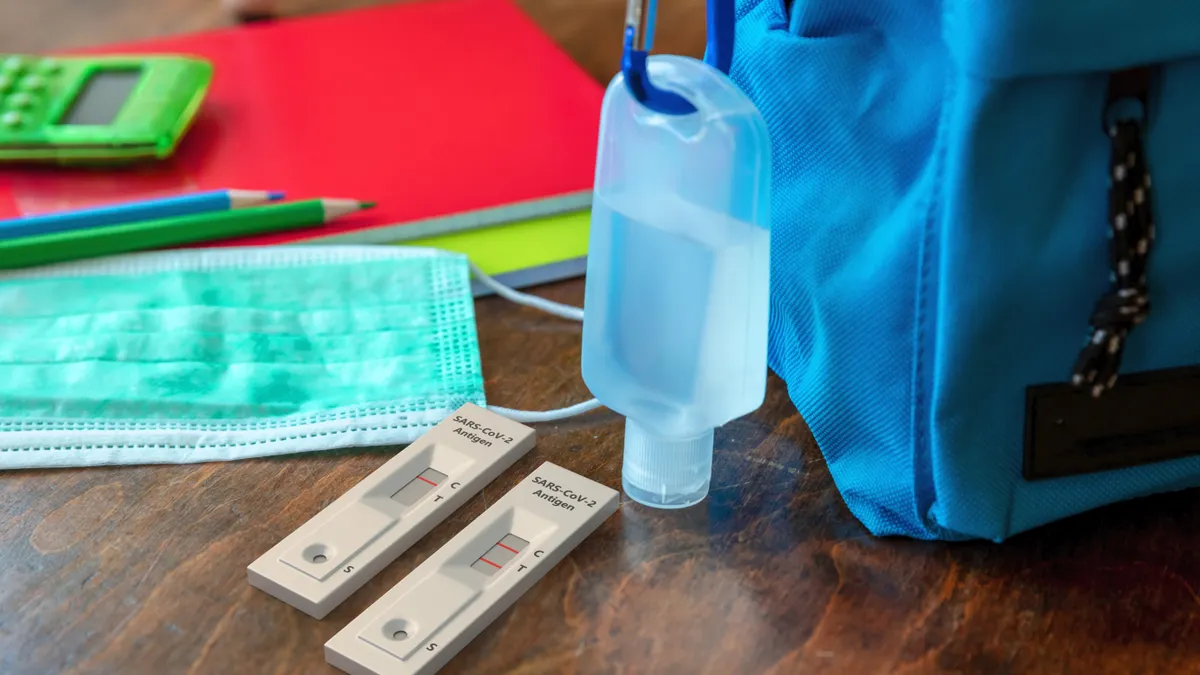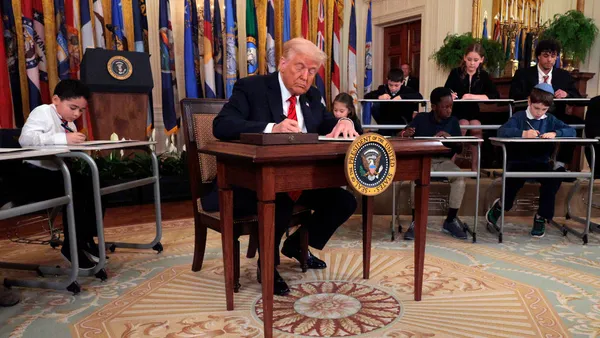Dive Brief:
- States will now be responsible for federal COVID-19 emergency payments before seeking reimbursement from the U.S. Department of Education, the agency said in updated guidance issued Wednesday.
- The Education Department said $4.4 billion remains across the three allocations provided by Congress to help K-12 schools and colleges recover from pandemic-related setbacks.
- That money represents a small portion of the $189.5 billion in federal allocations in the Elementary and Secondary School Emergency Relief fund. Additionally, spending deadlines have passed for all three allocations under ESSER.
Dive Insight:
In a statement, the Education Department said it was making the change to ensure transparency and accountability in the use of federal funds. Previously, states could "draw down on existing awards to pay for approved services without proof that the funds were used for authorized purposes," the agency said.
"The Department is changing the requirements to ensure taxpayer funds are expended responsibly, and will require states to keep the receipts to confirm this," the statement said.
A breakdown detailing the remaining $4.4 billion was not immediately available. It also wasn't immediately clear what the policy's implication would be for districts and states, given that about 99% of ESSER funding has already been spent. The largest and last allocation — the American Rescue Plan — carried a spending deadline of Jan. 28.
States that received ARP spending extensions for state or district-level COVID funds had to get those requests approved by the Education Department. According to figures from the Education Department in November, seven states and Puerto Rico received permissions for a longer timeline to spend down a collective $1.7 billion.
AASA, The School Superintendents Association posted on its website Thursday that it expects districts that have extended spending timelines for ARP funds to feel an immediate impact from the policy change.
"We are unsure how this will affect other funding streams where LEAs [local education agencies] need reimbursement from states," AASA said. "It is also unclear if it will influence states' willingness or ability to reimburse districts, as not all states can advance funds to LEAs without being certain of federal reimbursement."
It has been nearly five years since the global health crisis led to school closures and other disruptions. Districts spent much of the federal emergency funding on learning recovery, facility upgrades, return-to-school safety measures, and expanded learning time, such as summer programming.
Research has shown that the influx of emergency funds helped schools respond and recover from the pandemic, but measuring the effectiveness of the funding at a national scale is challenging since funds were used locally for a variety of different purposes at different stages of pandemic recovery.
As such, some K-12 organizations and research groups recommend additional local and national analysis into the spending and outcomes of the emergency funds.












